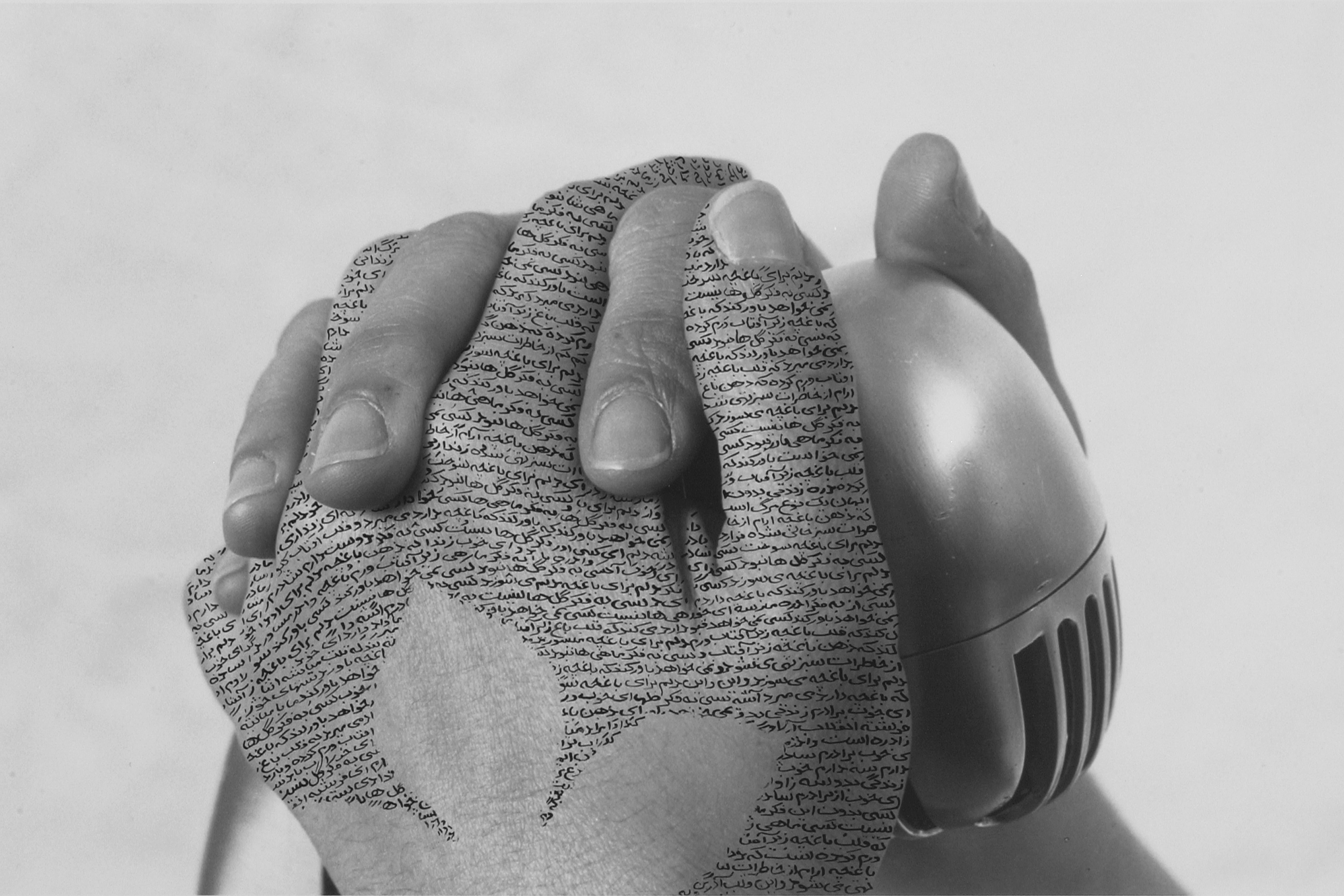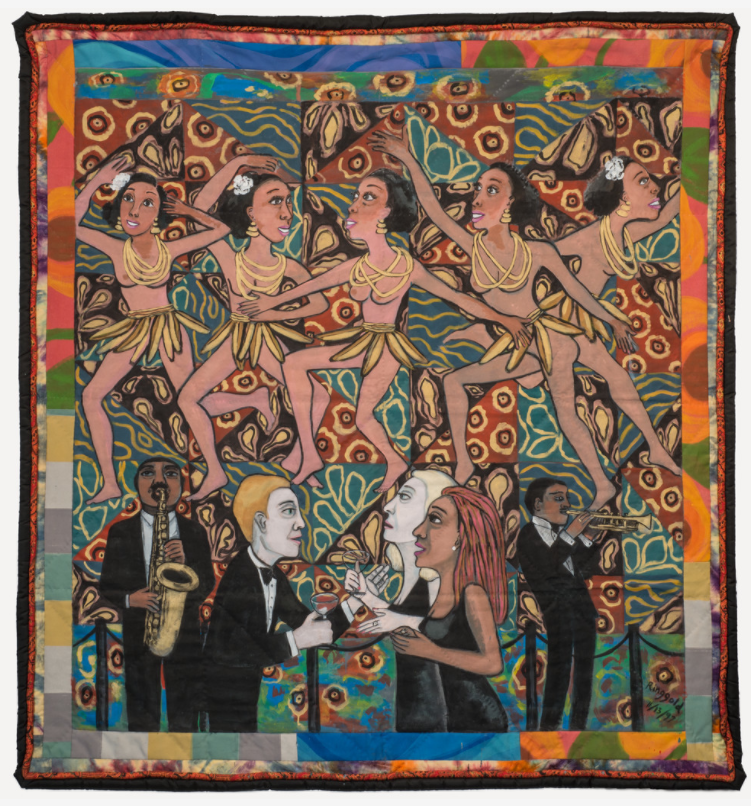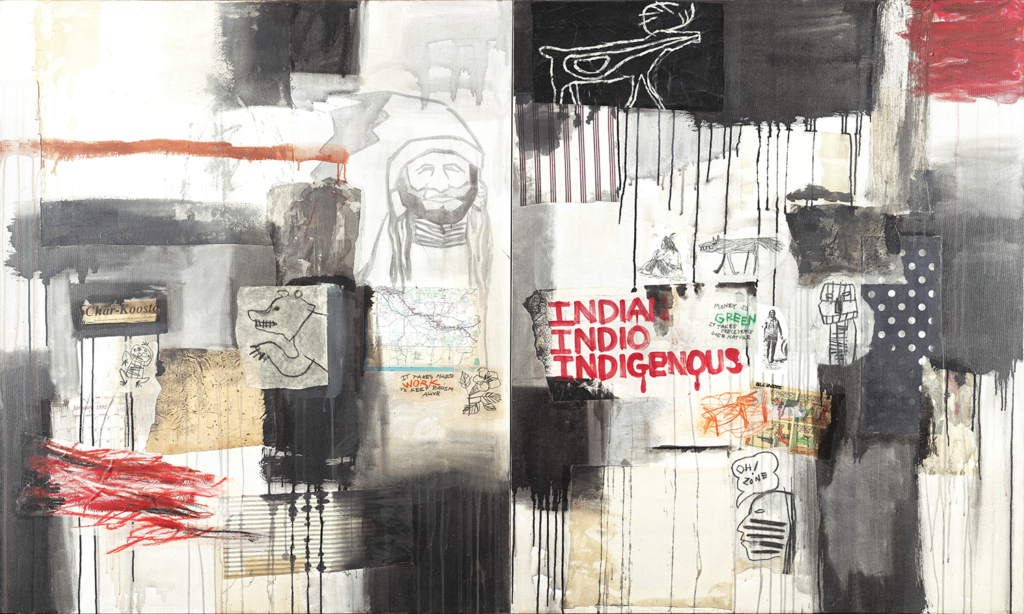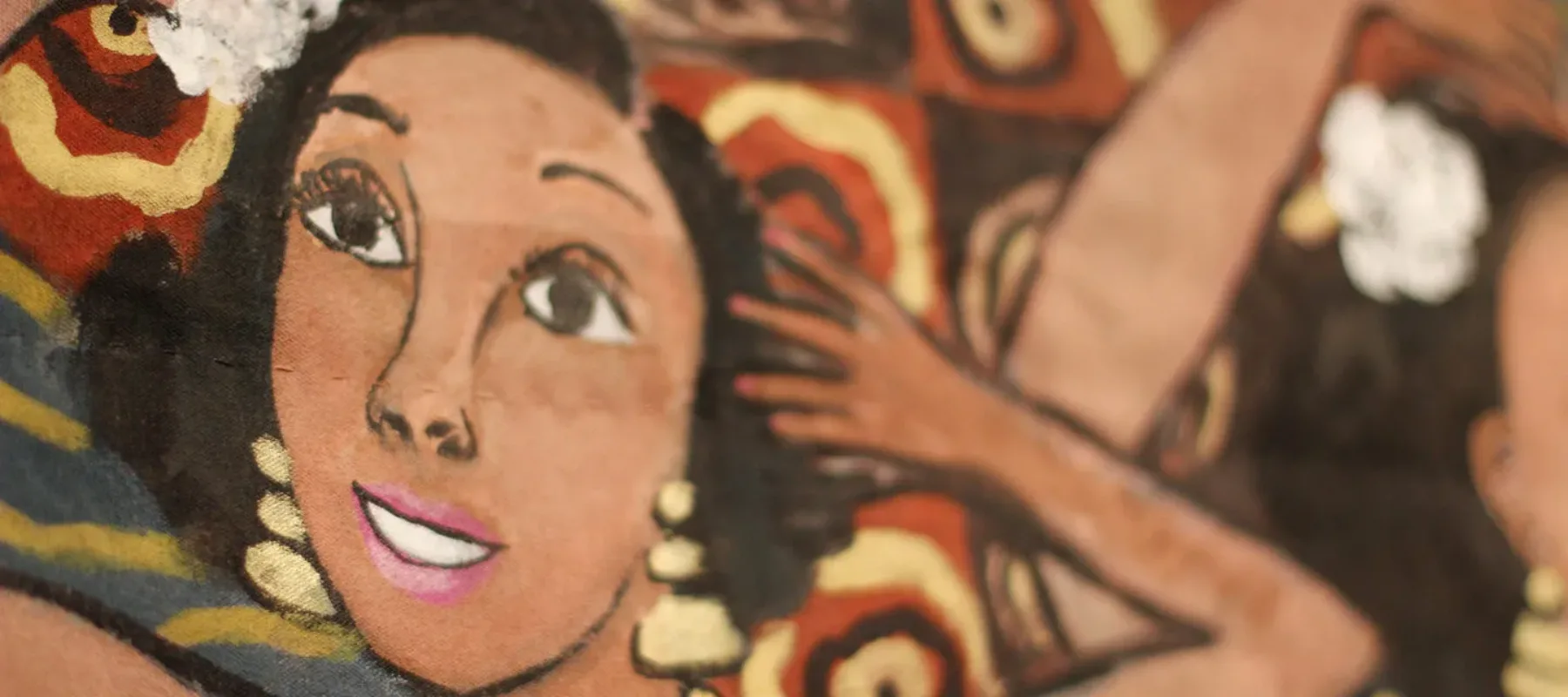At the National Museum of Women in the Arts, we regularly rotate our collection to spark new thematic connections. This is an essential part of our curatorial philosophy. In a six-post series, I will explore the themes featured in our most recent collection installation. Read about our “Family Matters,” “Rebels with a Cause,” “Space Explorers” and “The Great Outdoors” themes, and stay tuned for more.

Perhaps because of gendered, racial, and class-based expectations about a woman’s “place” in the world, many women artists examine the subjects of homelands and migration. Artists in this section convey the impact that cultural identity, living environments, and community have on people’s perceptions of themselves and others.
Many artists identify with a mother country, creating images that demonstrate their emotional connection to familiar locales and cultural customs. Others yearn for a sense of belonging, focusing on the experience of physical journeys or the complexities that arise with exile, migration, and hybrid identities. These works reveal our global culture, in which “home” is primarily a state of mind.
Gallery Highlights:
Iranian artist Shirin Neshat (b. 1957) addresses topics of exile and nostalgia in her multimedia works. In On Guard (1998), Neshat photographs the hands of a woman clasping a microphone. Out of frame, the woman wears a chador, an enveloping black garment worn by some Iranian women to cover their heads and bodies in public. Neshat photographed the woman’s exposed hands and inscribed Farsi poetry directly onto the image, forming a veil-like screen over her subject’s skin. On Guard exemplifies some of the dichotomies that have shaped Iranian society: man and woman, communication and silence, freedom and oppression.

The story quilt American Collection #4: Jo Baker’s Bananas (1997), by Faith Ringgold (b. 1930), pays homage to African American dancer Josephine Baker. Baker left the United States for Paris, where she rose to legendary status and lived until her final days. The “banana dance” that she performed in 1926 cemented her fame. Offstage, Baker supported the burgeoning Civil Rights Movement in the U.S. and used her prominence to bolster support for the cause.

The richly layered painting Indian, Indio, Indigenous (1992) by Jaune Quick-to-See Smith (b. 1940) is influenced by her childhood on the Flathead Reservation in Montana. The work criticizes the historical desecration of American Indian lands and continued injustices to native peoples and their cultures. She said, “My work comes from a visceral place—deep, deep as though my roots extend beyond the soles of my feet into sacred soils.”
